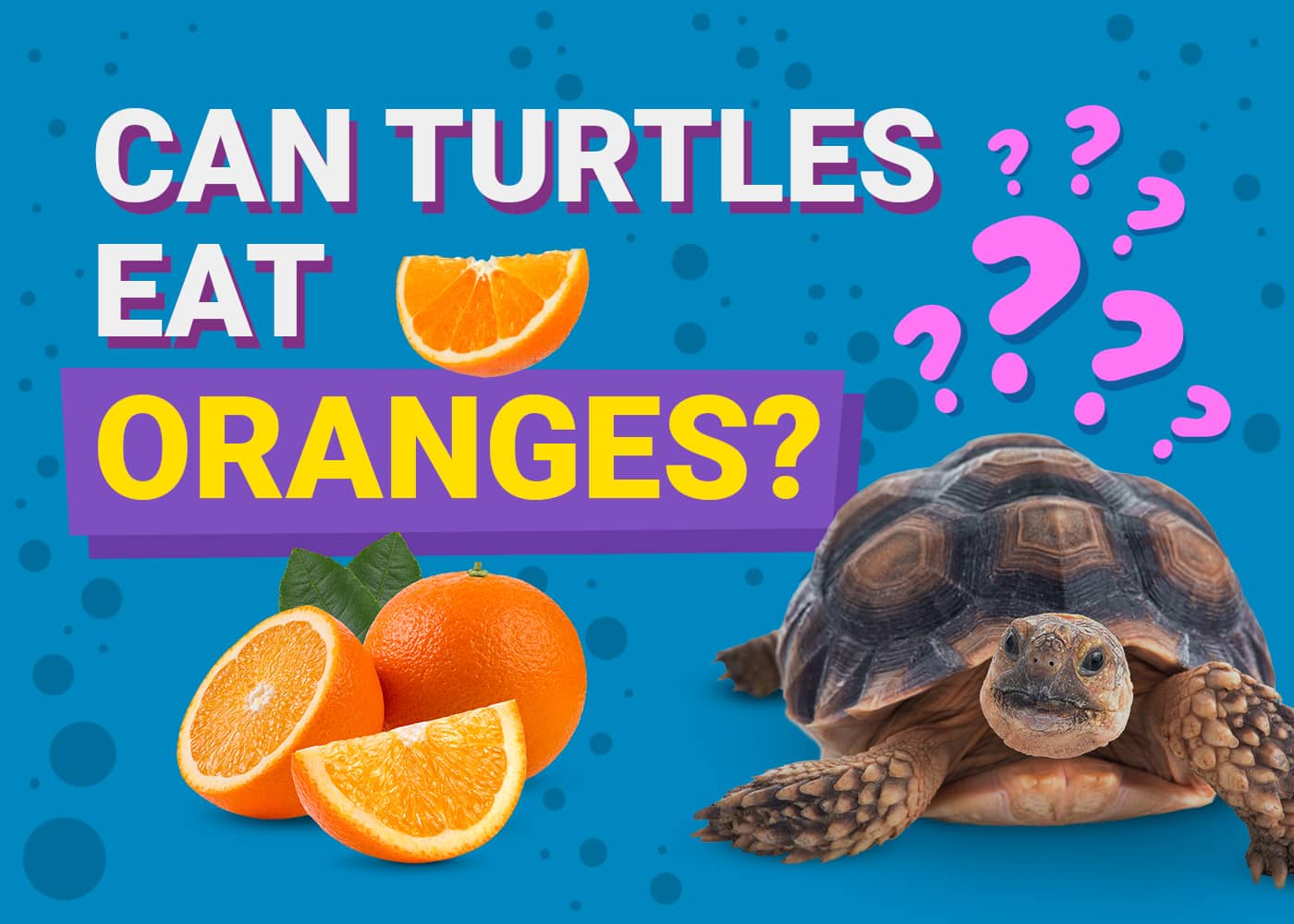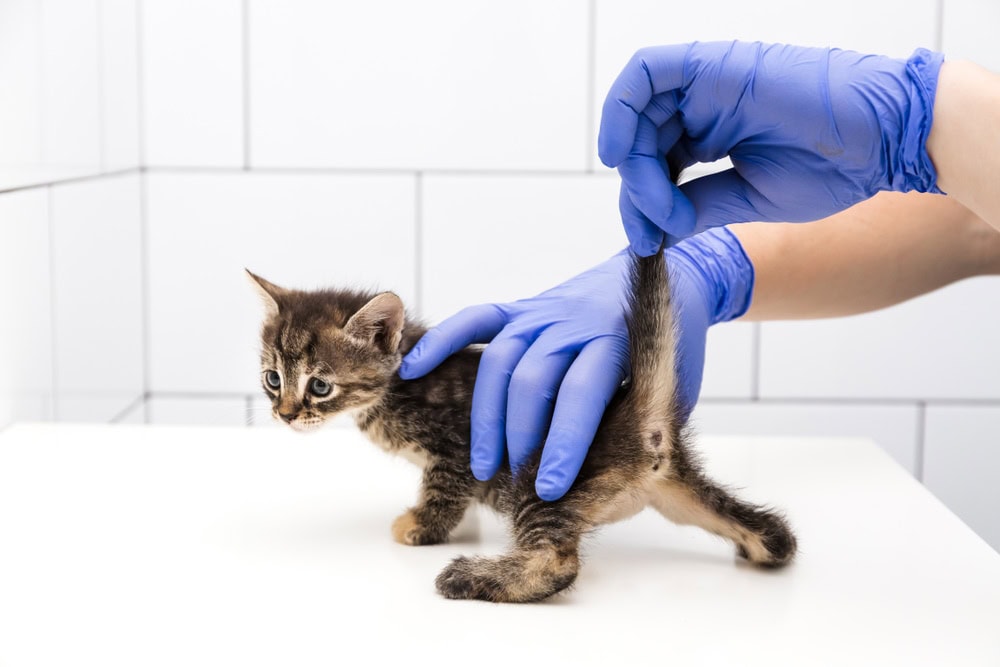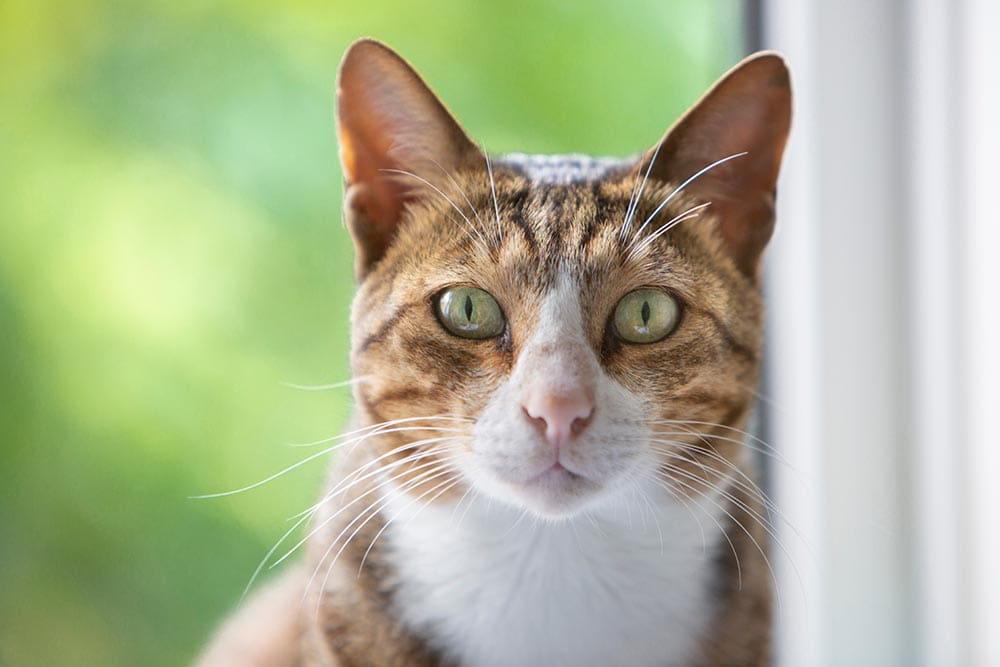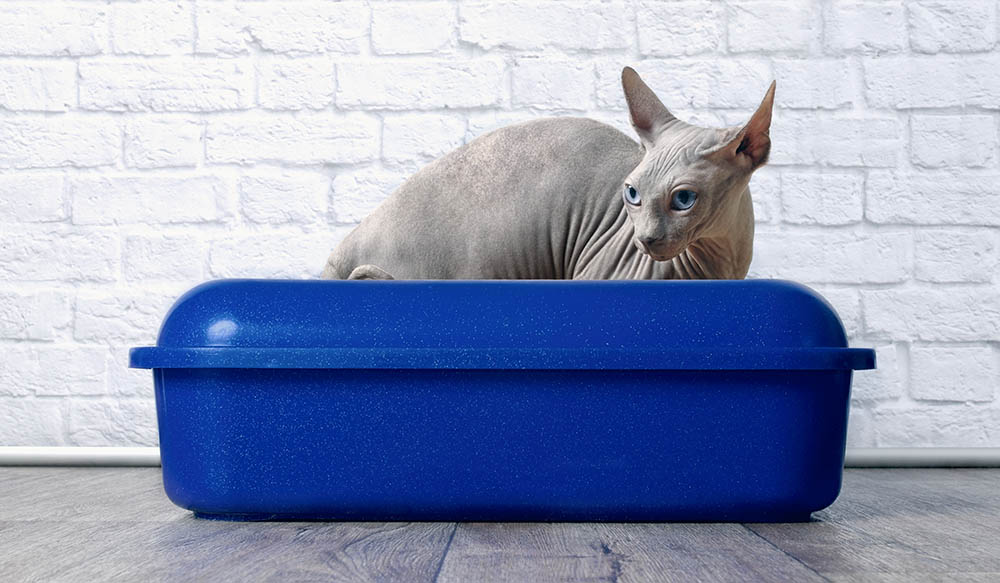VET APPROVED

The information is current and up-to-date in accordance with the latest veterinarian research.
Learn more »Click to Skip Ahead
Many pet turtle species are considered omnivorous, which means that they can eat both plant and animal-based foods. This means they can eat fruits, but they should only do so sparingly because fruit tends to be high in sugar and isn’t as compatible with their nutritional profile when compared to vegetables.
If you’re wondering about oranges, you will need to check your specific species of turtle, but most healthy, adult, omnivorous pet turtles are indeed allowed to eat oranges in moderation. Read on to learn more about why oranges can be good for turtles to eat in moderation and other details about a turtle’s diet.
Please note that, as there are many species of turtles, we’ll be focusing on two common turtles kept as pets: the red-eared slider (Trachemys scripta elegans) and the North American box turtles (of the genus Terrapene). This genus includes the fairly popular Eastern and Florida box turtles.

What’s Good About Oranges?
The information in this article pertains to sweet oranges (Citrus × sinensis). The bitter orange (Citrus × aurantium) is considered toxic for several pets (such as parrots); therefore, as a precaution, it is best not to offer your turtles bitter oranges.
As humans, we are encouraged to eat citrus fruits because of the amount of vitamin C that they provide. While turtles also need vitamin C, they can naturally synthesize it, so they do not strictly need to get it from their diet at all.
Oranges also contain calcium, with an ideal ratio to phosphorus of around 2:1. Like many other fruits. However, most of the orange is just water and naturally occurring sugars (in the form of carbohydrates).
What’s Bad About Oranges?
Like all other fruits, oranges are not without their downsides.
- Sugar: The high sugar content of oranges renders them a health risk if consumed in excess by pet turtles.
- Oxalates: Oranges are very high in oxalates 1, which greatly diminishes their nutritional potential. Excess amounts of oxalates are undesirable in a pet turtle’s diet, as they may lead to health issues (such as those involving the urinary tract).
The exceptionally high oxalate content of oranges is why they should be offered to your pet in moderation.
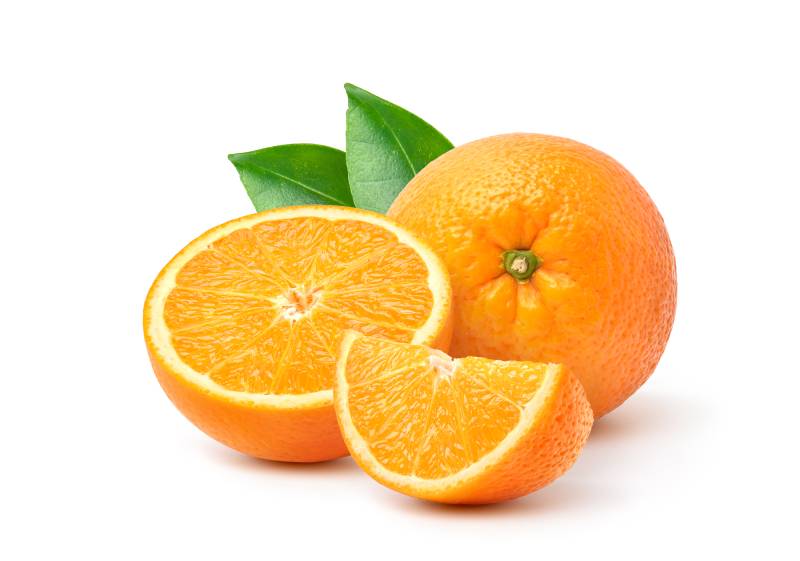

Typical Turtle Diet
The exact diet of a turtle depends on their species and where it comes from. They may be carnivores, omnivores, or herbivores. You will need to determine the species of turtle you have to determine their ideal diet.
Generally speaking, most aquatic species are omnivores, which means that they eat a combination of fruit, vegetables, and meat. The amount of meat and vegetables they require often depends on their age, with juveniles requiring the higher levels of protein that are afforded by a carnivorous diet and older turtles needing less protein, so they turn more toward vegetation and foliage as their primary food source.
There is a risk of overfeeding turtles because they are opportunistic. This simply means that they will eat whenever the opportunity presents itself. In the wild, opportunistic feeders may eat a lot in one sitting when the food is available and then go without any more meals for some time afterward. As pets, where there is no need to hunt for food, it can mean that they gorge themselves and eat too much. Therefore, it is down to you to ensure that you feed your pet the right amount of the right foods.
Oranges & Box Turtles
Compared to aquatic turtles, box turtles have a greater tolerance for fruits, and they also seem to have a slightly higher fruit quota in their diets. The general diet for a healthy adult box turtle is around 50% animal-based foods and the other 50% as plant-based foods.
Their plant-based diet is further split into 75% vegetables and 25% fruits. This means that, as a whole, their diet can incorporate around 10–12% fruit. Oranges are considered safe for box turtles; however, as mentioned above, moderation is key. It’s also best to offer them a high amount of variety in their diet. Oranges should only comprise a small portion of their diet and not be the sole fruit they eat.
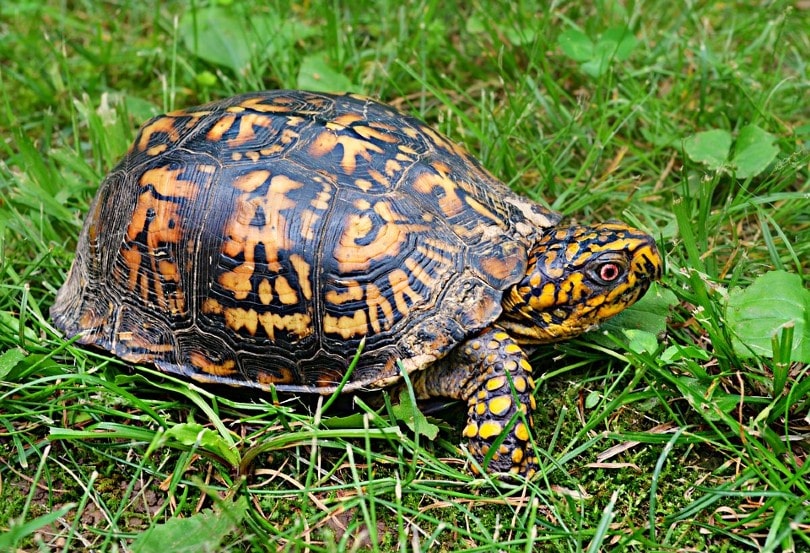
Oranges & Red-Eared Sliders
The aquatic turtles (also known as terrapins), which include the red-eared slider, have a very low threshold for fruits in their diet. As a general rule, fruits should only comprise around 5% of their diet at most. It’s also somewhat important to note that their diet as juveniles is very heavily biased toward that of a carnivore, and, as adults, they are typically better off foraging vegetation and pond plants.
It can also be challenging to feed these turtles fruit, as they prefer to eat in the water itself (where fruit quickly sludges and quickly deteriorates water quality). The good news, though, is that these pets don’t miss out if they aren’t offered oranges (or other fruits).

Can Turtles Eat Orange Peels?
When feeding oranges and other citrus fruits to turtles, it is important to remove the rind or peel. The fruit could be covered in pesticides and other chemicals that may not come off even with washing. Fortunately, it is easy to remove an orange peel. Therefore, you should not offer your pet orange peels.
What Other Fruits Can Turtles Eat?
Turtles can eat a decent variety of different fruits. They usually enjoy melon, different berries, and a small amount of sweet apples. Slice the apple or other fruit to make it easier to fit in the mouth and more palatable. If you are in any doubt about whether your pet should be eating a particular fruit, give it a pass until you consult your veterinarian for more guidance.
One fruit that some animals are not supposed to eat but is considered fine for turtles is the grape. These handy little fruits already come in bite-sized chunks, but you can cut them in half to make your turtle’s life even easier.
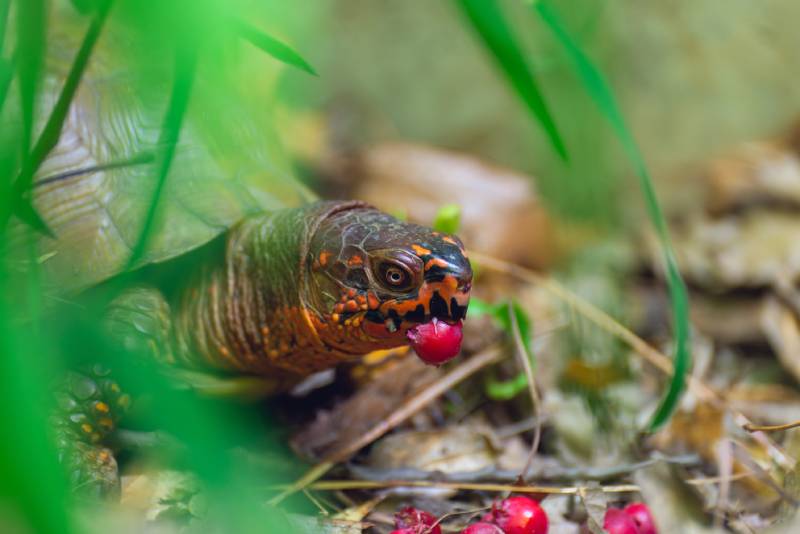

Final Thoughts
Most healthy adult aquatic turtles are omnivores, which means they eat a variety of fruits, vegetables, and meat. This also applies to box turtles kept as pets. Besides leafy greens, your turtle may enjoy a small piece of orange, but fruits should only be offered to your pet in moderation.
It is also important to note that your veterinarian should be your first point of contact to determine if something is an acceptable addition to your pet turtle’s diet.
- Related read: Can Turtles Eat Mango?
